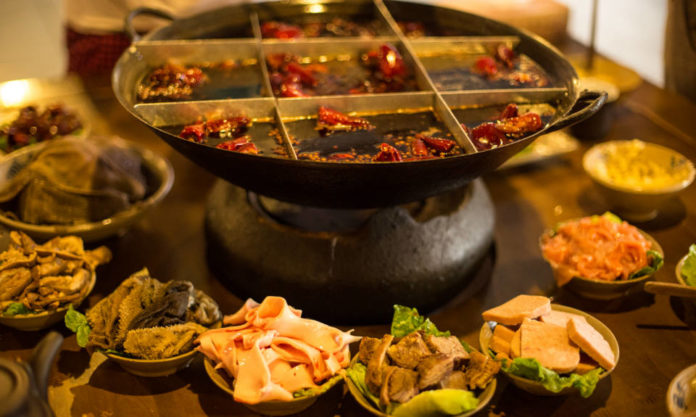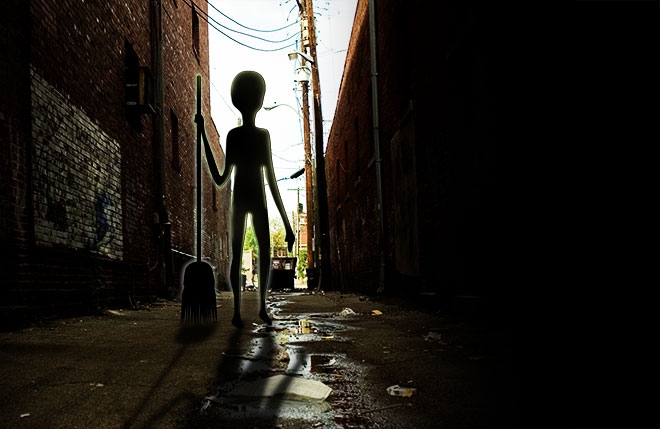The Qinhuai Line is the geographical dividing line between north and south China. On both sides of this border, there are obvious differences in natural conditions, geographical features, agricultural production and people’s living customs.
And their heating systems.
Dependent on geographical location, when the cold season hits, people in the north bask in their warmth and wear short-sleeves to walk around at home, while people in the south wrap themselves in down-cotton jackets and tremble on their sofa corner.
The root of the problem lies in the heating system. In the course of historical development, with the Qinhuai Line (해쥰뺨붉窟; Qinling Mountains-Huaihe River Line) as the boundary, it was decreed that there be no central heating systems installed in the south. The result is that we in the Yangtze River Basin find it hardest to fall asleep at night, and regularly awake with our breath as the first thing we see.
For some, this “ice cave” is their only companion through life’s winter.
Compared to the dry cold of North China, our cold is mainly caused by humidity and wind. With winter being comparatively long and rain all year round, humidity has a huge impact on the human body’s feelings of cold. According to meteorology, for every 10 percent increase in humidity, the temperature felt by the human body decreases by 1 degree Celsius.
Why doesn’t South China Deserve Central Heating?
With the progress of China’s industrialisation, centralised heating systems were introduced in the 1950s. According to geographical and climatic needs, Changchun, Jilin, Ha’erbin, Beijing and other places, studied the heating systems employed by the former Soviet Union, to then deploy cast-iron radiators over large areas of the cities. However, due to the shortage of energy in China at the time, heating pipes were only laid north of the Qinhuai Line, while there was no central heating equipment provided to the south.
At that time, areas deserving of heating were delineated, again according to the experience of the former Soviet Union; if the number of days with an average temperature equal to or below 5 degrees Celcius is equal to 90 days or more, then the area shall have central heating systems installed.
Bad news for us; the number of such cold days in the Yangtze River Basin generally numbers around 50. And unlike the “physical attack” in the dry north, the wet cold of the south is described as a “magical attack”; thick clothes do not help.
Neither is it realistic nor practical to install central heating facilities in today’s southern China. Tantamount to urban reconstruction, a thermal power plant is not enough; it would be necessary to build a network of boiler rooms across the city, together with the associated interconnected piping to virtually every single building.
In addition, as alert readers will have noticed, the thickness of walls in the south is nothing compared to the north. Once a concrete shell gets cold, it stays cold.
How Did the Ancient Chinese Manage to Stay Warm?
People in the south have therefore come up with many ways to keep warm. Today of course, there is air conditioning and under floor heating, but how did the ancient Chinese manage, given the horrible cold conditions outside that are a far cry from any kind of luxury?
Well, they took a few tips from those who built the Weiyang Palace in Chang’an (today’s Xi’an) in 200 BCE. The largest palace ever built, almost seven times the size of Beijing’s Forbidden City and 11 times that of the Vatican City, its builders came up with a special wall insulation for the residence of the queen therein.
The Jiaofang Hall (椒房殿) takes its name from this inventive form of insulation. Painted with a mush made from the flowers of the pepper tree, the walls were rendered pink, while protecting the wooden structure underneath and providing that much-needed insulation.
In addition, in order to ensure the warmth of the winter palace, the ancient palace architects also put in a hollow “wall” during construction, commonly known as the “fire wall”, located under the eaves of the hall. Hot charcoal could then be placed via a small passage into the fire wall; its heat sufficient to warm the entire palace along the fire wall. Not surprisingly, there was an additional fire wall installed under the emperor’s bed.
Closer to home, and in a more down-to-earth fashion befitting the common people, it more recently emerged that Nanjing people had been eating a kind of hotpot, in order to stay warm, as long ago as 2,000 BCE.
The finding was confirmed via a remarkable archeological discovery that was made in Nanjing’s Gaochun District in 1989.
In May of that year, local farmers found more than they expected when digging irrigation ditches in the area known as Chaoduntou (朝墩头). The resulting excavation by the Nanjing Museum and Gaochun County Cultural Protection Institute turned up 455 cultural relics, together with eight ash pits and 17 tombs, that date back some 4,000 years.
Among the discoveries was a four-legged clay cauldron, divided such that the heat source could be placed in its lower half, while food was cooked above, hotpot style.
Yet, the ancients were far from satisfied with their primitive contraption. An advanced version of the aforementioned, the so-called “Fengeding” (分格鼎; split pot) was unearthed in the Tomb of the Western Han Dynasty in Xuyi of Jiangsu Province (now famed as China’s crawfish capital) more recently.
The Fengeding is now regarded as the originator of the “Nine-Square Palace” (九宫格), being divided into nine separate cooking sections by means of a noughts-and-crosses metal grid.
This winter, therefore, when you walk into your nice, warm office and your glasses immediately fog up, spare a thought for those ancient locals from these parts, for there can be little doubt that old Nanjingers also knew a thing or two about luxury.















